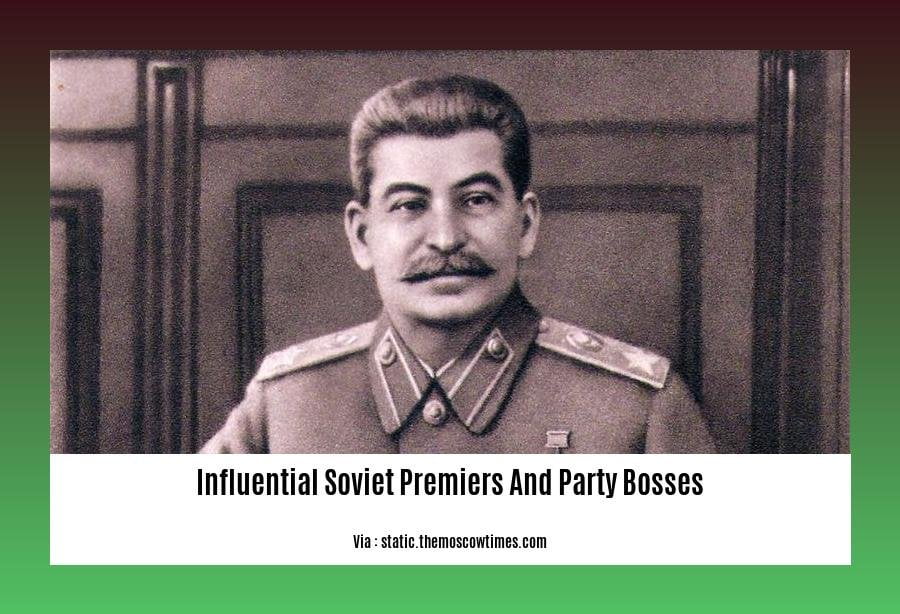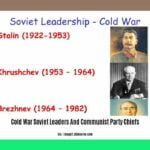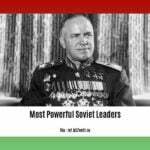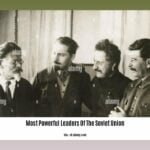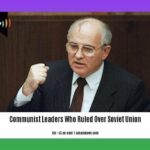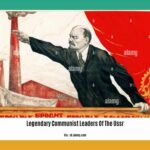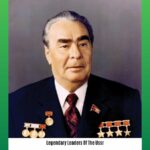Embark on a historical exploration of the influential Soviet Premiers and Party Bosses who shaped the destiny of the USSR. Dive into the ideological landscapes, political strategies, and profound impact of these key figures on the nation and the world.
Key Takeaways:
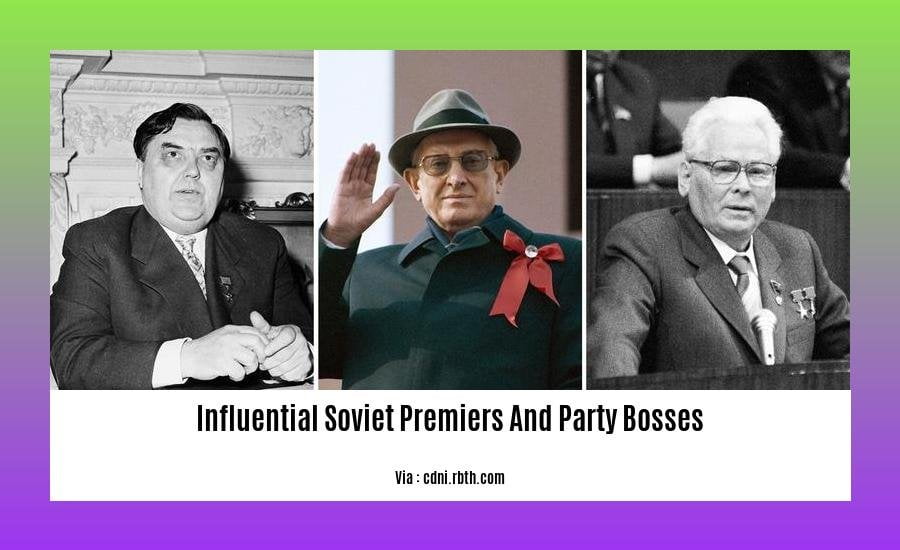
- Soviet leadership often had an unofficial de facto leader.
- Power initially spread among multiple individuals before Stalin’s consolidation.
- Stalin’s influence led to the elimination of the general secretary position.
- The 1977 Constitution clarified leadership roles: premier as head of government and Presidium chairman as head of state.
- Lenin’s collective leadership vision was replaced by Stalin’s centralized control.
Influential Soviet Premiers and Party Bosses
Let’s journey together to explore those who shaped the USSR, the influential Soviet premiers and party bosses.
Joseph Stalin: The Architect of Terror
Stalin’s ruthless leadership left an indelible mark. His policies, known as Stalinism, saw rapid industrialization but also widespread repression and fear. He masterminded the Great Purge, eliminating perceived threats.
Nikita Khrushchev: The Thaw’s Bringer
Khrushchev, Stalin’s successor, brought a breath of fresh air. He denounced Stalin’s brutality and introduced some reforms. His “thaw” period allowed for limited cultural and political liberalization, yet he remained an authoritarian ruler.
Leonid Brezhnev: Stagnation’s Reign
Brezhnev’s era was marked by economic stagnation and political conservatism. His policy of “détente” improved relations with the West, but his internal policies stifled innovation and progress.
Mikhail Gorbachev: The Last Gasp of the USSR
Gorbachev’s reforms, glasnost (openness) and perestroika (restructuring), were intended to revitalize the ailing Soviet system. However, they sowed seeds of dissent and unrest, ultimately leading to the Soviet Union’s collapse in 1991.
These men, the influential Soviet premiers and party bosses, shaped the destiny of the USSR. Their policies and decisions had far-reaching consequences, impacting the lives of millions and leaving a lasting legacy on the global stage.
Explore the history of the Cold War and uncover the influential roles played by the prominent leaders of the Soviet Union. Dive into the lives and achievements of the most powerful leaders of the Soviet Union, who shaped the course of history during that era. Don’t miss out on the fascinating stories of the legendary communist leaders of the USSR, who left an indelible mark on the world’s political landscape.
Leonid Brezhnev: Era of Stagnation and Heightened Tensions
Leonid Brezhnev’s 18-year tenure as the leader of the Soviet Union was a period of stability and stagnation. Initially, Brezhnev implemented some economic reforms that proved successful, and he prioritized maintaining control and stability within the nation. He initiated a policy of détente with the United States, leading to reduced tensions during the Cold War.
However, the Soviet invasion of Afghanistan in 1979 resulted in increased international isolation for the USSR. Despite a period of relative economic prosperity for Soviet citizens due to high oil prices, the economy stagnated due to a lack of innovation and resistance to change. Brezhnev’s era was characterized by a return to a more restrictive state, prioritizing stability over progress. His policies contributed to the eventual collapse of the Soviet Union.
Key Takeaways:
- Brezhnev’s leadership emphasized stability and control within the Soviet Union.
- The policy of détente with the United States reduced tensions during the Cold War.
- The Soviet invasion of Afghanistan led to international isolation and heightened tensions.
- The Soviet economy experienced both prosperity and stagnation during Brezhnev’s era.
- Brezhnev’s legacy is one of both stability and stagnation, contributing to the eventual collapse of the Soviet Union.
Citation:
Leonid Brezhnev
Mikhail Gorbachev: Glasnost, Perestroika, and Collapse of the Soviet Union
Overview
The leadership of Mikhail Gorbachev in the Soviet Union marked a period of significant reforms and ultimately, the dissolution of the Soviet state. Gorbachev’s policies of glasnost and perestroika aimed to revitalize the stagnant Soviet economy and address political inefficiencies, but inadvertently sowed the seeds of dissent and contributed to the collapse of the USSR.
Glasnost and Perestroika: A Double-Edged Sword
Glasnost, meaning “openness,” introduced greater freedom of speech and press, allowing for a more transparent and critical view of Soviet society. Perestroika, meaning “restructuring,” decentralized economic control, giving businesses more autonomy. While Gorbachev intended to rejuvenate the economy, these reforms had unintended consequences:
Economic instability: Perestroika loosened centralized control over businesses, leading to increased economic instability and shortages.
Weakening of the Communist Party: Glasnost and perestroika weakened the Communist Party’s authority, as they allowed for greater criticism and dissent.
The Unraveling of the Soviet Union
The combination of economic instability, political dissent, and ethnic tensions within the Soviet republics culminated in the collapse of the USSR in 1991. Gorbachev’s reforms, intended to breathe new life into the Soviet system, ironically played a pivotal role in its demise.
Key Takeaways:
- Gorbachev’s reforms of glasnost and perestroika aimed to revitalize the Soviet Union but had unintended consequences.
- Glasnost allowed for greater freedom of speech and press, while perestroika decentralized economic control.
- The reforms weakened the Communist Party and contributed to economic instability.
- The combination of these factors ultimately led to the collapse of the Soviet Union in 1991.
Citation:
HISTORY | Perestroika: Glasnost, Definition & Soviet Union:
Other Notable Leaders: Malenkov, Andropov, and Chernenko
Beyond the prominent figures mentioned earlier, several other notable leaders played significant roles in shaping Soviet history.
Georgy Malenkov: After Stalin’s death in 1953, Malenkov briefly served as Premier. He attempted some reforms to loosen Stalinist repression but was later ousted in a power struggle.
Yuri Andropov: A former KGB chief, Andropov became General Secretary in 1982. He initiated a crackdown on corruption and economic mismanagement, but his reign was cut short by his death in 1984.
Konstantin Chernenko: Chernenko succeeded Andropov and served as General Secretary from 1984 to 1985. However, due to poor health, he did not make any major policy changes.
Key Takeaways:
- Malenkov briefly led the USSR after Stalin but was later removed from power.
- Andropov implemented reforms to address corruption and economic issues.
- Chernenko‘s tenure as General Secretary was marked by poor health and limited policy changes.
Citation:
* Britannica: Soviet Union – Interregnum, Andropov, Chernenko
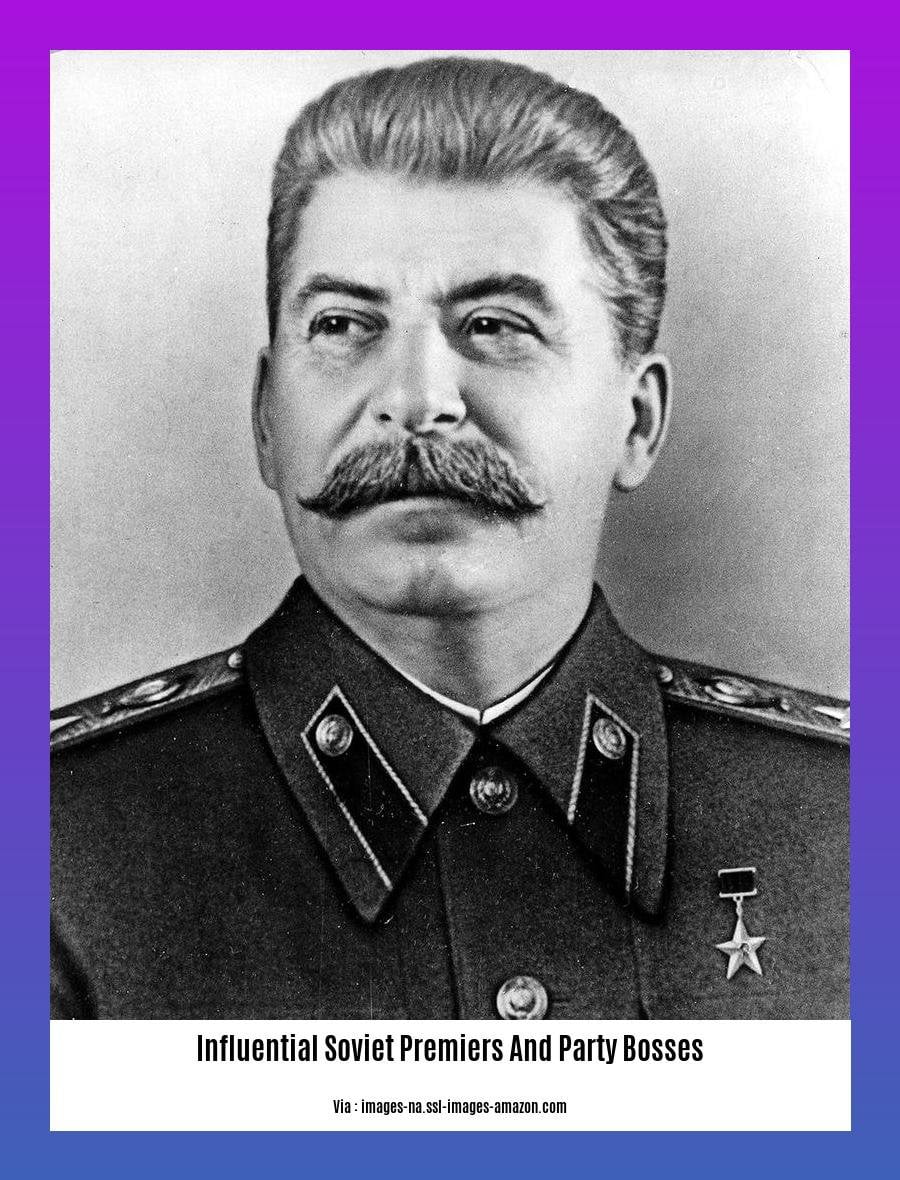
FAQ
Q1: Who was the most influential Soviet Premier?
A1: Joseph Stalin holds the distinction of being the most influential Soviet Premier. His iron-fisted rule from 1924 to 1953 transformed the USSR into a global superpower and left an enduring legacy on its political landscape.
Q2: What was the significance of Leonid Brezhnev’s era?
A2: Leonid Brezhnev’s tenure as Premier from 1964 to 1982 marked a period of stability, economic prosperity, and international détente. However, his policies ultimately led to economic stagnation, which laid the groundwork for the eventual collapse of the Soviet Union.
Q3: How did Mikhail Gorbachev’s reforms impact the Soviet Union?
A3: Mikhail Gorbachev’s introduction of glasnost and perestroika aimed to revitalize the Soviet economy and address political inefficiencies. While these reforms brought greater freedom and openness, they also weakened the Communist Party and contributed to the economic and political instability that ultimately led to the dissolution of the USSR.
Q4: What was the role of Yuri Andropov in Soviet leadership?
A4: Yuri Andropov’s brief tenure as General Secretary from 1982 to 1984 was marked by a crackdown on corruption and an emphasis on economic reform. As the first KGB agent to hold the position, his reign represented a shift in the balance of power within the Soviet leadership.
Q5: What was the relationship between the Premier and the Party Boss in the Soviet system?
A5: In the Soviet Union, the Premier and the Party Boss often held distinct roles, with the Premier responsible for governmental affairs and the Party Boss controlling the Communist Party apparatus. However, there were instances where these roles overlapped or shifted, depending on the dynamics of power and the personalities involved.
- Crypto Quotes’ Red Flags: Avoid Costly Mistakes - June 30, 2025
- Unlock Inspirational Crypto Quotes: Future Predictions - June 30, 2025
- Famous Bitcoin Quotes: A Deep Dive into Crypto’s History - June 30, 2025
